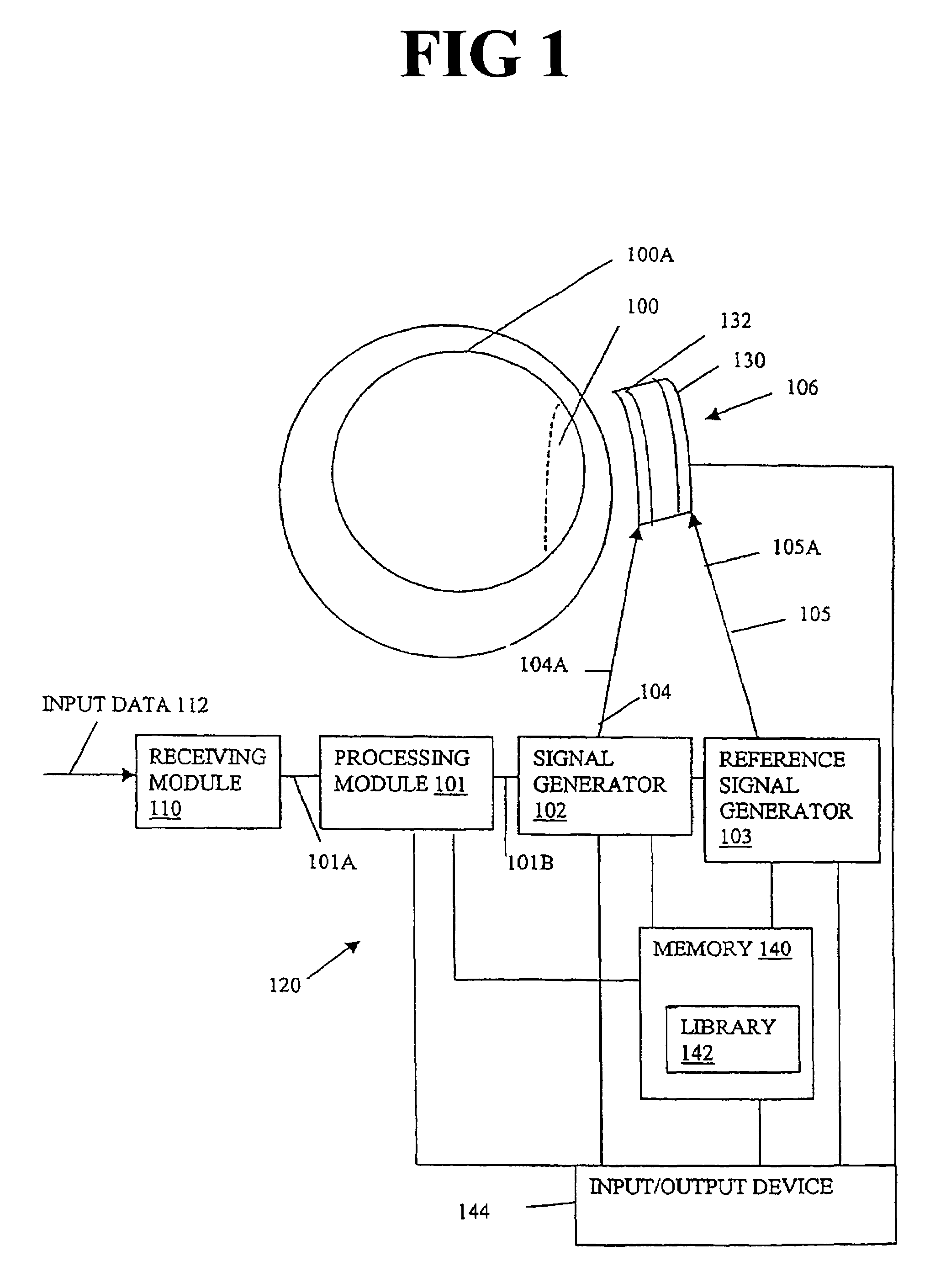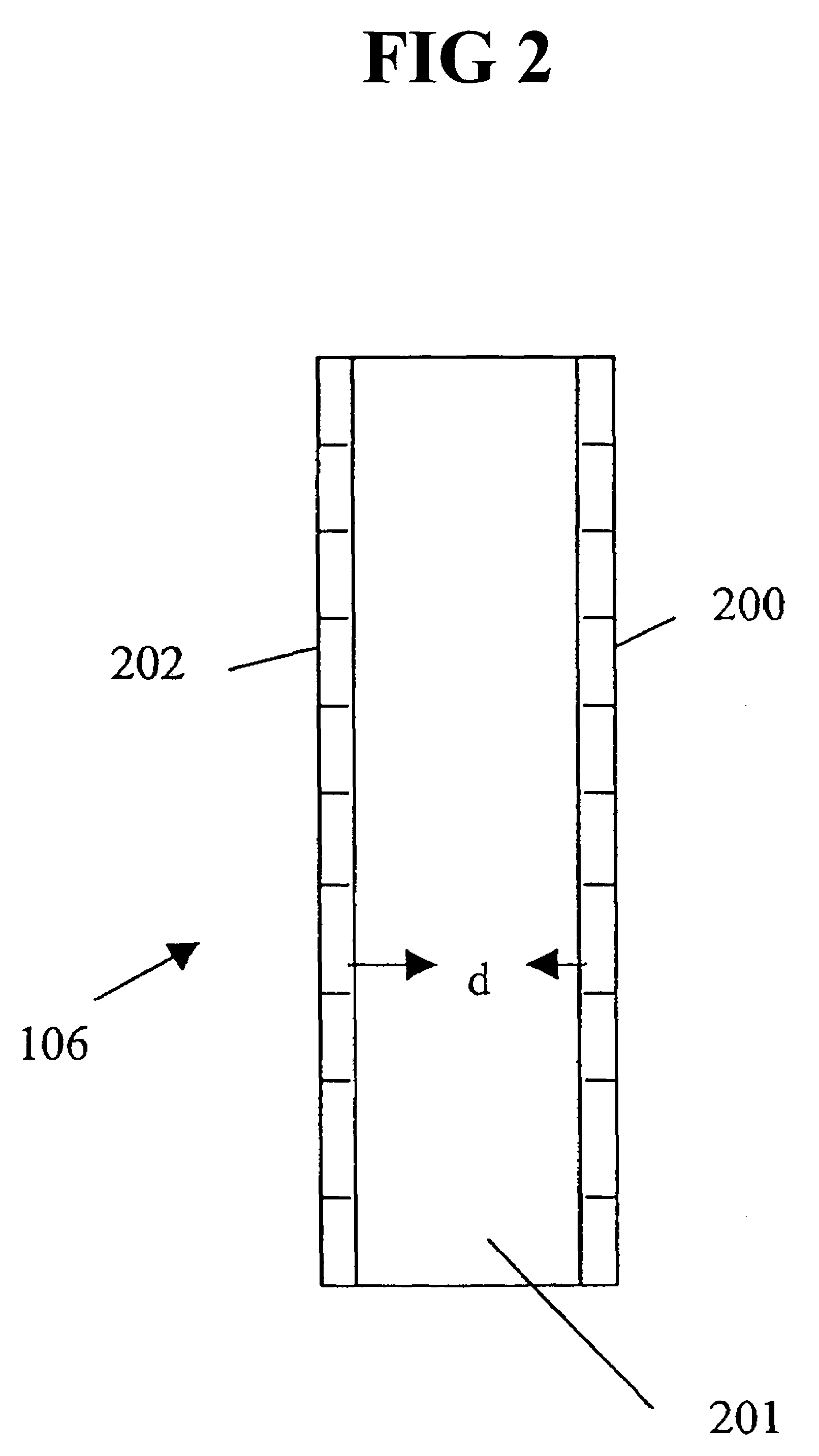Scanning method for applying ultrasonic acoustic data to the human neural cortex
a human neural cortex and scanning method technology, applied in ultrasonic/sonic/infrasonic diagnostics, applications, therapy, etc., can solve the problems of medical complications, additional or on-going surgery, patient trauma, etc., and achieve the effect of modifying the firing rate of neural tissu
- Summary
- Abstract
- Description
- Claims
- Application Information
AI Technical Summary
Benefits of technology
Problems solved by technology
Method used
Image
Examples
exemplary embodiment 400
[0066]FIG. 4 illustrates an exemplary embodiment 400 of a method for calibrating or configuring the system 120 of FIG. 1, which generates sensory data onto a human neural cortex of a particular user's brain 100A. In a block 401, the administrator attaches the transducer system 106 in FIG. 1 non-invasively to a user's head and powers on the system 120. In one embodiment, the transducer system 106 is positioned near the back of the user's head to be closer to the visual cortex 100. The transducer system 106 may be attached and removed by the administrator or the user.
[0067]In block 402, the administrator causes the transducer system 106 to generate a high frequency acoustic signal(s) / pattern pulsed at low frequencies into the user's brain 100A shown in FIG. 1. An initial signal may be called a ‘test signal.’
[0068]In a block 403, the signal(s) affects, e.g., speeds up or slows down, one or more neural firing times in the user's brain 100A, such as the visual cortex 100.
[0069]In a block...
exemplary embodiment 500
[0075]FIG. 5 illustrates an exemplary embodiment 500 of a method of generating sensory data onto a human neural cortex. The system 120 may be configured to generate live or recorded images, videos, textual pieces, sounds, audio pieces, smells, taste and tactile sensations. In a block 501, the receiving module 110 of FIG. 1 receives a sensory input from a video camera or other source, such as a VCR, a DVD player, a cable TV system, an Internet connection, etc. The sensory input may be transmitted by a wire or wireless communication system. For example, for a vision-impaired user, the video camera may be strapped on or near the user's head such that the angle of the camera changes as the user turns his or her head. Alternatively, the video camera may be configured to move according to a hand-controlled device, such as a computer game joystick. The sensory input may comprise digital data or analog data. If the input data is analog, the processing module 101 may digitize the input data....
exemplary embodiment 1100
[0108]Turning to FIG. 11, shown therein is an exemplary embodiment 1100 of a method for generating sensory experiences.
[0109]In element 1101, an acoustical signal is directed to a human neural cortex to form a first array of points on the visual cortex tissue.
[0110]In element 1102, the acoustical signal is modified to expand each of the points in the first array in a circle about each point until each of the circles touches one or more neighboring circles in the visual cortex tissue.
[0111]In element 1103, the acoustical signal is adjusted to move a center of each of the circles in the first array to one or more locations in unaffected tissue in the visual cortex to form a second array of circles.
[0112]In element 1104, the acoustical signal is modified to contract each of the circles in the second array about a new center point until reaching a dot at the new center point.
[0113]In element 1105, the acts above are repeated to achieve a desired level of sensory accuracy.
[0114]Turning t...
PUM
 Login to View More
Login to View More Abstract
Description
Claims
Application Information
 Login to View More
Login to View More - R&D
- Intellectual Property
- Life Sciences
- Materials
- Tech Scout
- Unparalleled Data Quality
- Higher Quality Content
- 60% Fewer Hallucinations
Browse by: Latest US Patents, China's latest patents, Technical Efficacy Thesaurus, Application Domain, Technology Topic, Popular Technical Reports.
© 2025 PatSnap. All rights reserved.Legal|Privacy policy|Modern Slavery Act Transparency Statement|Sitemap|About US| Contact US: help@patsnap.com



